Hardware startups in Korea succeed on global crowdfunding sites
Zikto, Moky and Yolk are just three of many Korean hardware startups using Kickstarter and Indiegogo to hit their crowdfunding goals. Here are their stories
Zikto office
It was a Friday afternoon in balmy July, but there were no cries of TGIF in the Zikto office located near Yeoksam, Seoul. Nobody was watching the clock for 5 PM, nor were they rushing to go home or out. Ted Kim and his team were working harder than ever, trying to beat time. They were already three months late, and had given many assurances to patient backers on US-based crowdfunding site Kickstarter that they were doing their best to deliver a good — no, great — product. Formerly known as Arki, Zikto is a sleek, elegant wrist wearable that helps track walking and sitting posture. Better late than haphazard.
Wearing a Zikto on his right wrist — his Co-founder Shawn Kim has one adorning each wrist, one to test the app on his iPhone and the other for an Android smartphone — Ted Kim took a quick tea-break to talk to me about crowdfunding a wearable device and the wild logistics that came with it. About 20 minutes later, we were joined by Enyoung Cho, CEO, Innopresso, who founded the company that launched multi-functional Moky on Indiegogo, another US-based crowdfunding site.
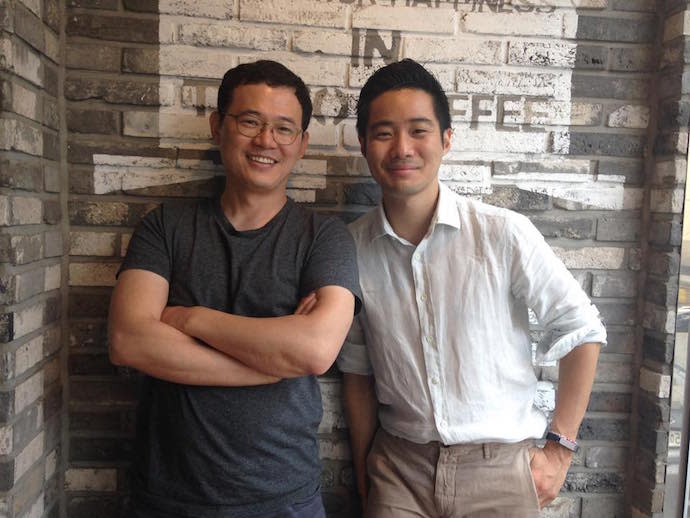
L-R: Enyoung Cho, CEO, Innopresso, and Ted Kim, CEO, Zikto
“Honestly, I won’t be doing it again because I was so stressed out,” said Kim, whose campaign secured US$164,262 out of a US$100,000 goal. He continued, “It was extremely painful for us.”
Kim’s pain stems from ill preparation; he thought that having a “cool” product is enough, that word will spread on its own, that marketing was not needed. Kim said that the Zikto team was in stealth mode before launching the campaign on Kickstarter.
“We thought we were like Apple or Samsung — we’re gonna reveal that day! But once we launched it, no one even cared,” recalled Kim. On the day Kim and his team launched the project on Kickstarter, they saw that the page generated less than 500 views — probably from their friends. “That day, we felt that something was not right,” he said.
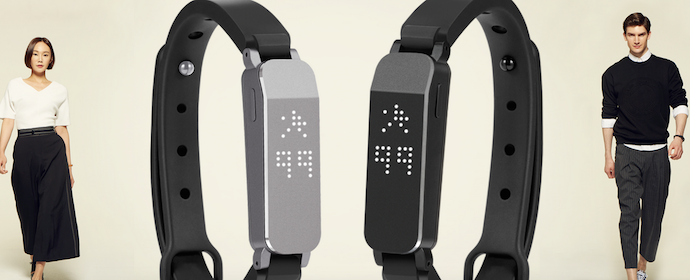
“We weren’t that prepared. Every night, I was dreaming that maybe next day, we [will] get [a] boom. But if you do nothing, nothing will happen,” said Kim.
Kim struck gold when a reporter from the Wall Street Journal asked him and his team to meet in Hong Kong for a video interview. Even though the prototype was barely working, the concept shone through and “worked out fine”, he said. That was the tipping point. Once they got featured on the publication, other media outlets started paying attention. Humbly, Kim noted once more that his team got lucky; they started off without much thought being put to marketing, and yet, they managed to succeed.
Also Read: Building a hardware startup is no longer so hard: Experts
But if Kim absolutely has to go back in time and start again, he would research different crowdfunding platforms, learn how to come up with a budget, and dole prototypes out to media outlets so that journalists could try the smart band before writing a review. However, he knows that talk is cheap. “I know that’s not really possible. I am launching the project because I want to launch the product,” he said, explaining the chicken-and-egg problem. He couldn’t afford to create a few prototypes just to give them out to the media when he needs funds to create those prototypes in the first place.
While Kim might not want to go on this “painful” journey ever again, he said that he wants to help other entrepreneurs, should they need tips regarding crowdfunding. The first thing he wants these entrepreneurs to know is: don’t trust yourself too much. Before launching their project on crowdfunding websites, founders should know by heart just how many people they need to speak to, and get connected with the staffers at Indiegogo, Kickstarter or other crowdfunding websites because the support will come in handy.
“I don’t want people to believe that Kickstarter or Indiegogo is the golden stage,” Kim opined.
The ‘golden stage’ in this case implies that entrepreneurs might perceive popular crowdfunding platforms as magical podiums, that if they launch their projects on those websites, the goal will somehow be fulfilled without them needing to play their part.
Post-Kickstarter/Indiegogo, now delivering
For Kim and Cho, the hardest part isn’t over yet. Now, it’s all about manufacturing and delivering the goods to backers, which include tasks like weekly trips to the factory, communicating with manufacturers, printing labels, realising that something went wrong with the manufacturing, letting backers know that there will be a delay, handling cancellations, handling criticism from backers and the media, packing the goods into boxes, bringing the boxes to the post office, and more.
In our interview, Kim said that there have been less than 10 cancellations, and that most of the backers were understanding. “We kept updating the backers,” he explained. “I was really grateful. … Because if I was the backer, I would be mad, but they’re … so nice. They’re just our backers, literally.”
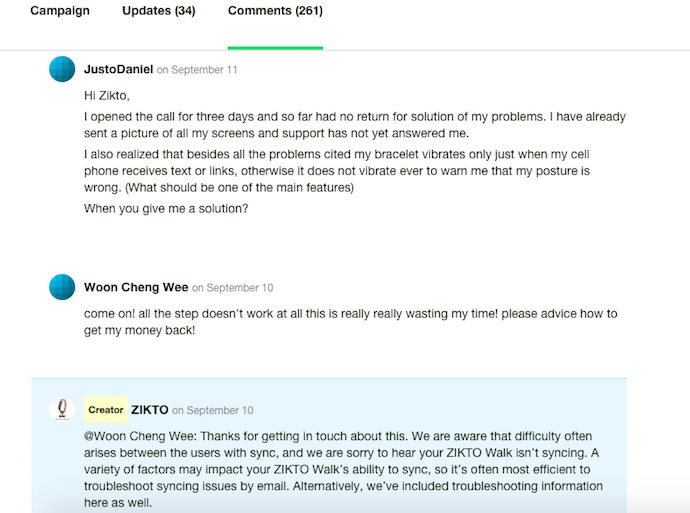
“So they know you guys are working hard,” Cho chimed in.
Kim nodded affirmatively and said, “We actually work hard not to delay our products. I don’t want to delay my product.”
In 2014, James Park, Co-founder and CEO, Fitbit, sat down with Jeff Clavier, Founder and Managing Partner, SoftTech VC — one of the investors in Fitbit — and talked about the challenges faced by the hardware company in its early days. In that interview, Park and Clavier discussed how Fitbit managed to convince millions of people to purchase an activity tracker that wasn’t made by electronic manufacturing superstars Apple or Samsung, and the perils of actually making tangible things. Clavier ended off with these words, “Manufacturing is a bitch. Remember that.”
“I thought, ‘Whoa why is it so hard? Why does everyone say that manufacturing is so hard?’ And then I figured. It’s not easy,” said Kim after telling us about the Jeff Clavier interview. “Because nothing is in our control. I can’t control it. Algorithms, researching — that can be done in-house, but I’m not making this product. Someone else is. We’re not assembling this product. There are workers who are assembling our product.”
What’s the most difficult part about manufacturing? “Everything is,” said Kim grimly. When Zikto first came back from the factory, it was obvious that there were changes to be made. “It was too lean, too small,” he recounted. “We could barely fit a battery into our first concept design. We found one battery that could be fitted, but it was less than 20 milli-ampere, which will maybe run for a day.”
Also Read: Meet WAY, a chic and compact device for your skin
Aside from being costly, changes were also time-consuming. The team couldn’t do anything while waiting for the revised product to come back from the factory or when they have to wait for a particular item to arrive from overseas, like a Printed Circuit Board Assembly (PCBA), which can take two weeks. Then, they can only hope that the PCBA works, because if it doesn’t, that’s another two weeks in the drain.
“I will pray from now on,” said Cho, whose campaign secured US$133,292 out of an original goal of US$30,000 goal. At the moment, there are working prototypes of an older version of Moky, but they are a little outdated being made in 2012. “For the new model I don’t have a working prototype yet, we’re making it these days.”
Making good on his word to help other entrepreneurs, Kim looked at Cho and gave a few words of advice, “You should order your parts (components) now. For MCU, Bluetooth, those sort of things.”
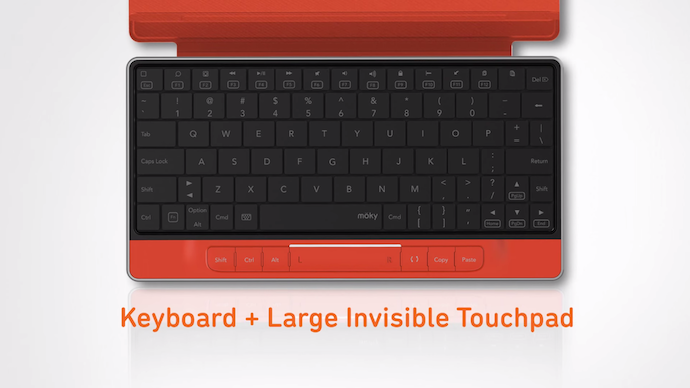
Another word of advice? Kim said that quality control is one of the most — if not the most — important things when it comes to building your own hardware company. “For the customer, they’ll only receive one,” he said, “That product is Zikto. Every product should be nearly perfect.”
Yolk, the latest South Korean hardware wonder
Holding a stalk of grass in her hand, South Korean designer and entrepreneur Chang Sung-Won greeted netizens on Kickstarter, speaking into the lapel mic clipped onto the white company T-shirt she was wearing. She had started Yolk, the latest South Korean hardware company to crowdfund its way to more than a million dollars.

Chang Sung Won, CEO, Yolk
“I first want to thank all the supporters of our first project Solarade. Following the success of Solarade, this year, we are coming back to present you Solar Paper, the thinnest and lightest solar charger in the world. Let’s take a look,” she said cheerily.
This is not Chang’s debut appearance on Kickstarter campaign videos. In March 2013, going by the name ‘Sen’, she designed and launched Cuiolela, a stitchless leather card wallet that appeals to the minimalistic millennial, under her company nolla design on the crowdfunding website. The goal was US$7,000. It ended its campaign with US$7,766 from 213 backers. Mission accomplished.
Also Read: 5 more APAC IoT crowdfunding campaigns y’all should throw your $$ at
Then, in May 2014, nolla design launched Solarade, an iPad-sized solar-powered charger. The campaign was a huge hit: Chang and her team managed to raise US$71,460 — more than twice the amount pledged — from 1,025 backers.
Her third and most recent project Solar Paper performed better than ever, having raised US$1,021,583 out of a goal of US$50,000, making it one of the best-performing campaigns from South Korea.
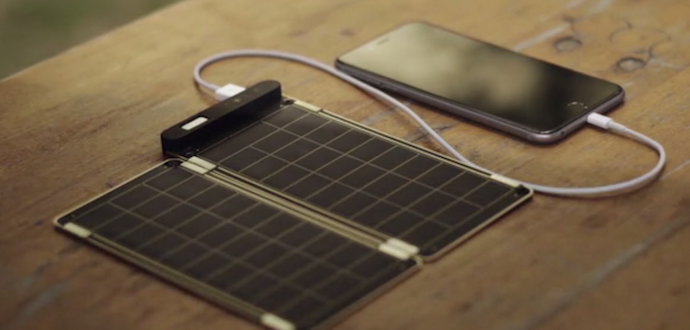
Solar Paper
Innopresso, Yolk and Zikto are all South Korean hardware companies that have succeeded on global crowdfunding sites like Kickstarter and Indiegogo.
All of them have the same mentality: it’s either go global or go home. This might sound almost too intuitive — almost too obvious that one should not need to mention it — but it’s not exactly the go-to strategy for many South Korean companies, especially when many think that dominating the local market will do just fine. But for hardware startups like Yolk, Innopresso and Zikto, the world is their oyster.
Life without crowdfunding
The advent of crowdfunding sites like Kickstarter and Indiegogo has helped many people launch products and services that might not otherwise see the light of day. Hypothetically speaking, if these crowdfunding sites did not exist, how would those people live out their dreams?
Kim said, “I don’t think it would be even possible. Through Indiegogo, Kickstarter, we get confidence that this is working, people like my product. But without that, … we were really blind to how our product is going to be. We don’t get any feedback.”
Also Read: Indian crowdfunding site Ketto raises US$700K for SEA expansion
“It would be very difficult,” said Cho. “But if it wasn’t there, I’ll try to make a prototype, a working prototype, and approach a lean process. I would try to show this to a big company, that might be interested.”
“That would be my strategy if there are no crowdfunding websites,” concluded Cho.
The post Hardware startups in Korea succeed on global crowdfunding sites appeared first on e27.



